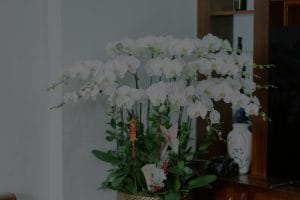**Abstract:** Discover the best feng shui decor to create a harmonious living environment. This guide explores essential elements that promote balance, positivity, and well-being in your home.
Understanding Feng Shui: The Art of Balance
Feng Shui, an ancient Chinese practice, emphasizes the importance of balance and energy flow in our surroundings. It is believed that the arrangement of objects and decor can significantly influence our emotions and overall well-being. By incorporating feng shui principles into your home, you can create a space that fosters tranquility and harmony. This approach not only enhances your living environment but also contributes to a more positive mindset, making it essential for anyone seeking a peaceful life.
Essential Elements of Feng Shui Decor
When considering feng shui decor, certain elements are crucial for achieving a harmonious living space. The five elements—wood, fire, earth, metal, and water—play a pivotal role in creating balance. Each element corresponds to different aspects of life, such as growth, passion, stability, clarity, and flow. By integrating these elements into your decor, you can enhance specific areas of your life, whether it be career advancement, relationship improvement, or personal growth.
Colors that Promote Harmony
Colors are a vital aspect of feng shui decor, as they evoke different emotions and energies. For instance, soft blues and greens are known to promote relaxation and calmness, making them ideal for bedrooms and living areas. On the other hand, vibrant reds and oranges can stimulate energy and passion, suitable for spaces where creativity thrives. By carefully selecting colors that align with your intentions, you can create an environment that not only looks appealing but also resonates with your emotional needs.
Strategic Placement of Furniture
The arrangement of furniture is another critical component of feng shui decor. Proper placement can enhance the flow of energy, known as “Chi,” throughout your home. Avoid placing furniture in a way that blocks pathways or creates clutter, as this can lead to stagnant energy. Instead, aim for an open layout that encourages movement and interaction. For example, positioning your bed or desk in a commanding position—where you can see the entrance—instills a sense of security and control in your space.
Incorporating Natural Elements
Nature plays a significant role in feng shui, and incorporating natural elements can bring a sense of calm and connection to the outdoors. Indoor plants not only purify the air but also symbolize growth and vitality. Choose plants like peace lilies or snake plants, which are known for their low maintenance and positive energy. Additionally, using natural materials such as wood, stone, and bamboo in your decor can enhance the grounding effect of your space, promoting a serene atmosphere.
The Power of Symbols and Art
Symbols and artwork can significantly impact the energy of your living environment. Choose pieces that resonate with your aspirations and values. For instance, a painting of a serene landscape can evoke feelings of peace, while an image depicting abundance can attract prosperity. Feng shui principles suggest placing artwork at eye level to maximize its impact. Be mindful of the messages your decor conveys; positive symbols can uplift your spirit and inspire a harmonious living space.
Creating a Personal Sanctuary
Ultimately, the best feng shui decor is one that reflects your personal style and resonates with your emotional needs. Create a sanctuary that feels uniquely yours by incorporating elements that bring you joy and comfort. Whether it’s a cozy reading nook or a vibrant gallery wall, your space should inspire you and promote a sense of well-being. By thoughtfully curating your environment, you can cultivate a harmonious living space that nurtures your mind, body, and spirit.
In conclusion, the best feng shui decor for creating a harmonious living environment involves understanding the principles of balance, incorporating essential elements, choosing colors wisely, arranging furniture strategically, integrating natural elements, and selecting meaningful symbols. By following these guidelines, you can transform your home into a sanctuary that supports your emotional and spiritual needs, ultimately leading to a more fulfilling life.










